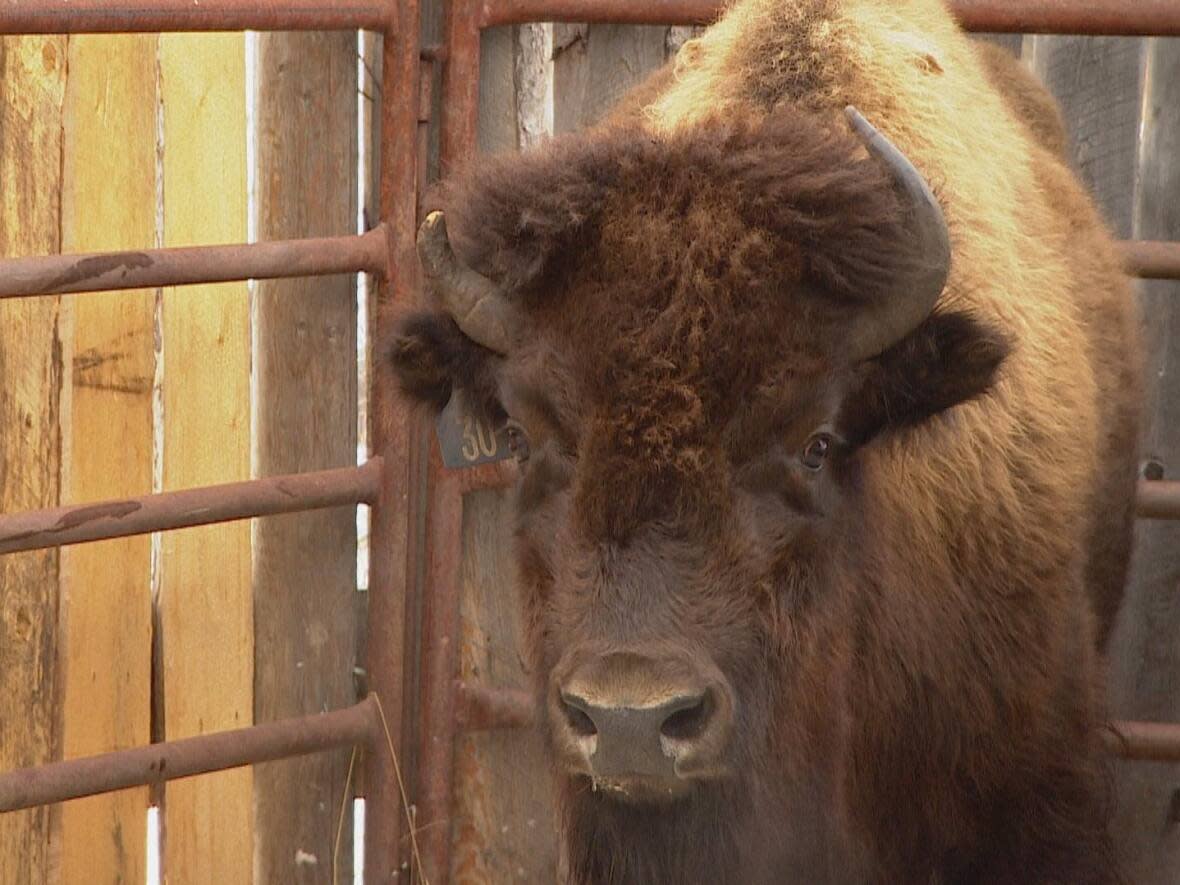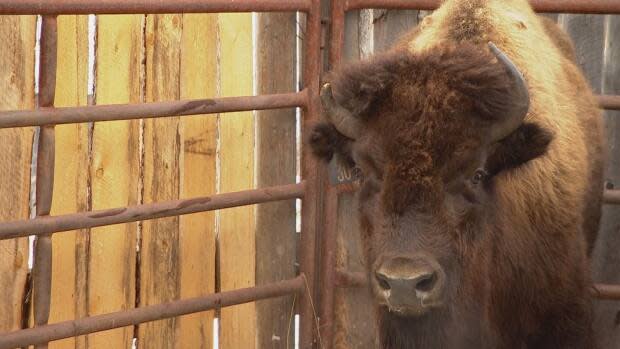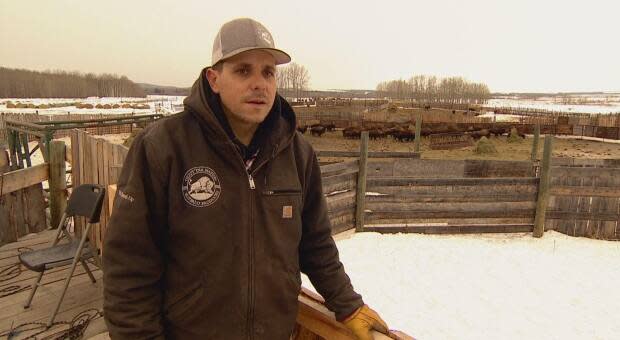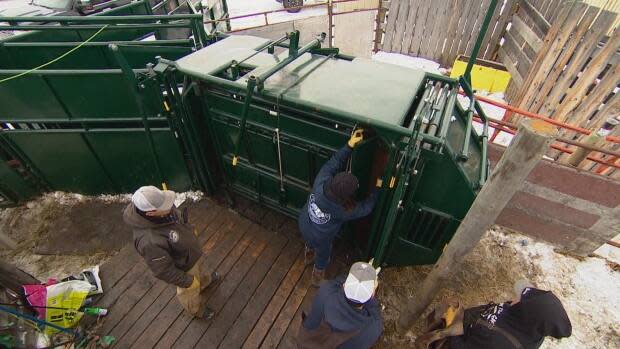Annual bison roundup 'an honour,' say Tsuut'ina Nation members

It's hard to miss the sounds of the Tsuut'ina Nation annual buffalo roundup, just southwest of Calgary.
Thunderous clangs pierce the air as the giant animals rattle their way through the corral — a system of roofless, metal chutes — jumping so high their entire heads can be seen from the ground.
Volunteers open and close a series of metal doors from a wooden walkway above as each buffalo is coaxed through the system. They're dewormed, weighed and, at a final stop, the doors of a squeeze chute drop down to hold the animal in place for tagging and vaccination.
It all takes just a few minutes. But when the doors release, each buffalo sprints its way out, hooves smacking the ground as they return to the rest of the herd.
"It's a good adrenaline rush when you're working with these guys. They're so unpredictable and naturally wild animals," said Clayton Whitney, who manages the Tsuut'ina buffalo paddock.
"It's definitely a stressful time of year getting them through and processing them through the system safely."
Buffalo have roamed a 485-hectare patch of land at the heart of Tsuut'ina Nation for more than 40 years. Every November, they're rounded up for care. Some are also sectioned off to be sold to keep the herd's numbers manageable.
The animals offer benefits to the land, but they also create an important connection to the past for the First Nations community.

Millions of buffalo — which are also known by their scientific name, bison — once roamed free across North America, providing food, hides and spiritual significance to their ancestors, says Tsuut'ina Elder Harley Crowchild.
"As far as I know, they've been here since Tsuut'ina was here," he said.
Overhunting brought the animals to near extinction by about 1890, according to a Parks Canada report. Conservation efforts began soon after, the report says, with the agency working to restore both conservation and cultural bison herds.
In 1976, Crowchild worked with then-chief Clifford Big Plume and several community members to ask Parks Canada to deliver a herd of buffalo back to Tsuut'ina land.
"At one time, our people survived on the buffalo," he said. "I think it's very important to keep any culture, any tradition."

Jonathan DeMoor, ecologist team leader at Elk Island National Park, said they delivered 30 plains bison from the park to the nation in 1980, in one of several similar transfers to Indigenous communities.
"Transferring bison to Indigenous communities allows Parks Canada to maintain a healthy herd with enough grazing land, while also protecting vegetation communities and rangeland for other species," he said in a statement.
"Parks Canada is committed to working with Indigenous communities to transfer bison as a way of strengthening Indigenous connections with their history and culture and supporting socio-economic opportunities related to bison."
The agency also manages several wild conservation herds, including one in Banff National Park.
The Tsuut'ina herd has now grown from 30 in 1980 to about 370 today. It's a statistic Whitney says he is proud of, having now looked after the herd for nearly eight years.
"It's just an honour to be a part of them and working with them and knowing how they looked after our ancestors for, you know, hundreds and hundreds of years," he said.
"So I believe it's our turn to look after them and get … the numbers back to where they were back in the old days."
Throughout the year, Whitney says, they use rotational grazing, meaning they'll keep the buffalo moving around to give the grass and the land a chance to heal.
The nation also harvests some buffalo to provide meat for the community. They handed out a portion to nearly every household last year to help them through the pandemic.
"It's pretty neat to see … that meat going out to the members and them eating the meat that they were, their ancestors ate," Whitney said.
Portions of the buffalo are also used in different ceremonies, such as sundances and naming rituals.
"Every part of the buffalo was used by our people a long time ago," said Crowchild. "People are real happy because different families, they want to use the buffalo [in] ceremonies for their family."

It's also a community effort to keep the buffalo herd healthy. At the roundup, several volunteers join the four permanent staff to help out each year, working to ensure each animal is sorted and inspected.
Once they're released back to the pasture, they'll receive regular hay over the winter, with staff keeping a close eye on their health.
Come spring, it's calving season.
Whitney says it feels good to see buffalo roaming on the land again.
"If we had enough land for them, I'd love to see, in the future, to see them dispersed out in different parts of the nation and even encourage other reserves to get them back on their nation and see them back on the land where they belong."
Crowchild says he hopes the buffalo will remain a constant for Indigenous communities in Canada.
"It should stay with our people till the end of time," he said.


